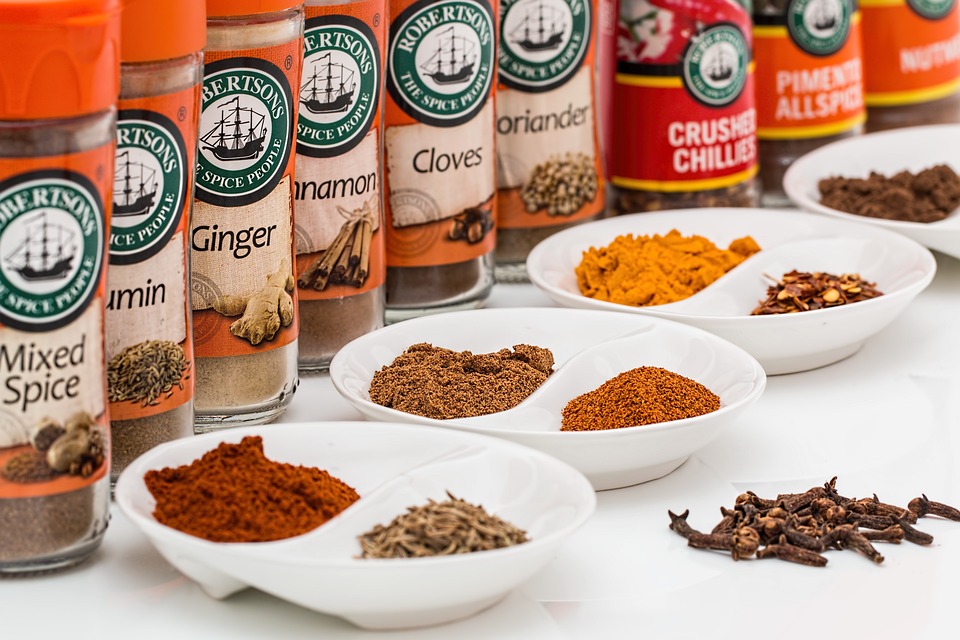Spices are used around the world. The global seasoning and spices market size was valued at USD 35.38 billion in 2021 and is expected to expand at a compound annual growth rate (CAGR) of 5.6% from 2022 to 2030*. The spice industry uses Lean and Six Sigma tools to improve quality and production. We’ll look at applications from India, Turkey, Sri Lanka, and Nigeria and finish with a video of garlic powder production.
Using Lean Manufacturing Techniques to Reduce Spice Packaging Defects: India
In an article titled “Quality Improvement in the Line Carton Product through Application of 7QC Tools” the DS Spice Group discusses the implementation of Lean manufacturing techniques to reduce defects occurring in spice packaging.
The article includes:
- Expert Machine for Carton Pack Production
- Carton Pasting/Adhesive Problems
- Internal Pouch Lamination Sealing Problems
- Line Carton Printing Problems
- Data Collection
- Histogram of Defects
- Pareto Chart and Pie Chart of Defects
- Cause and Effect Diagram for Line Carton Adhesive Problems
- Existing Defects Run Charts
- Line Carton Defects Identification
- Defect Name
- Causes
- Completed Corrective Actions
- Improvement in Adhesive Problems
- QC for New XPERT Machine
- After Implementation Data Collection
- After QC Data Analysis and Changes
You can read the article here.
Using FMEA and EWMA Control Charts to Improve the Safety of Red Pepper Spice: Turkey
In a paper titled “Improvement of the safety of the red pepper spice with FMEA and post processing EWMA quality control charts” authors Sibel Ozilgen, Seyda Bucak, and Mustafa Ozilgen discuss the use of FMEA to assess the risk of aflatoxins in red pepper spice and the use of EWMA control charts to monitor aflatoxin production during storage.
Note: aflatoxins are a family of toxins produced by certain fungi that are found on agricultural crops and may cause liver damage and cancer.
The paper includes:
- Application of Failure Mode and Effect Analysis to Pulverized Red Pepper Production
- Pareto Diagrams for Total Risk Classification Before and After Corrective Actions
- EWMA Charts
FMEA analysis indicated that the highest total risk including chemical plus physical plus biological was associated with the washing stage followed by the receiving and storage stages.
Risk of accepting the batches contaminated with aflatoxin may be eliminated by applying the Codex Alimentarius sampling plan before putting the dry pulverized bell pepper spice into the storage facility.
Note: the Codex Alimentarius, or "Food Code" is a collection of standards, guidelines and codes of practice adopted by the Codex Alimentarius Commission.
You can read the paper here.
Value Chain Analysis and Mapping of Three Spice Value Chains to Identify Constraints and Opportunities: Sri Lanka
In a report titled “Analysis of cinnamon, pepper and cardamom value chains in Sri Lanka” authors Manoj Thibbotuwawa, Janaka Wijayasir, and Dilani Hirimuthugodage discuss the mapping of three spice value chains in Sri Lanka – cinnamon, pepper and cardamom – to identify opportunities and constraints regarding quality and safety issues.
The study recommends policy interventions at different points in the value chains.
The report includes:
- Primary Data Collection Methods and Tools
- Product Standards for Cinnamon, Pepper, and Cardamom
- Cinnamon Value Chain Analysis and Map
- Opportunities and Constraints in Cinnamon Value Chain
- Pepper Value Chain Analysis and Map
- Opportunities and Constraints in Pepper Value Chain
- Cardamom Value Chain Analysis and Map
- Opportunities and Constraints in Cardamom Value Chain
- Recommendations to Address Constraints in the Three Spices Value Chains
Copy and paste the following link into your browser to access the report.
Using Lean to Improve Product Performance in Spice Production: Nigeria
In an article titled “Relationship Between Product Performance and Lean Product Development Tool” authors Mauton Gbededo, Daniel Aikhuele, and Desmond Ighravwe evaluate the relationship between Maggi spice production of Consolidated Foods Limited, in Nigeria and its relationship with DMAIC (Define, Measure, Analyse, Improve and Control) model.
The article includes:
- Is/Is Not Scope
- Project Charter
- Project Tracking Gantt Chart
- Data Collection Plan
- Spice Manufacturing Line Flowchart
- Spice Manufacturing Line Defect Data
- Pareto Chart of Major Defect Contributions to Low Performance Line
- Stratified Defect Data
- Pareto Chart of Stratified Defects
- Brainstorming Results Re: Low Performance Due to Reel Offsetting
- Cause and Effect Diagram for Low Performance Due to Frequent Reel Offsetting
- 5 Why Analysis for Improvement Solutions
- Line Performance Before and After the Improvement Project
- Control Measures
At the end of the Lean implementation project, product performance of the pilot line increased from 60% to 76% with a cost savings of NGR 12.03 million.
Use the following link to download a copy of the report.
Garlic Powder Production
See a video of Garlic Powder Production from Wendy Ye.
You can watch the video here.
Advance your knowledge of Six Sigma and join ISSSP today!
Access the hundreds of interviews, webinars, whitepapers,
case studies, and other resources available in our online library.







Leave A Comment